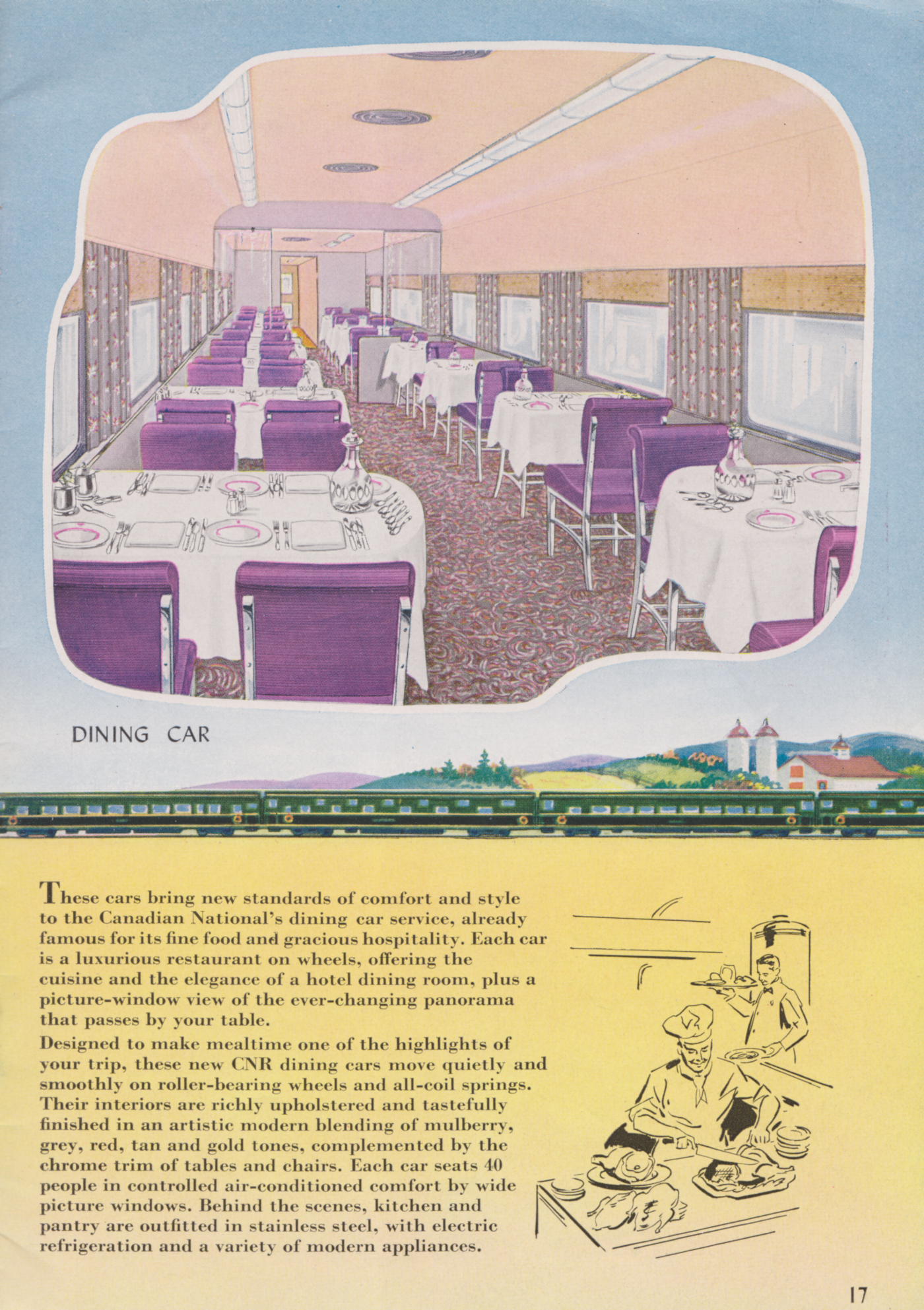In the mid-1950s, both the CPR and CNR were ordering new passenger equipment. Whenever a world war comes along it seems that railways neglect and burn out their capital equipment and physical plant as they support 'the effort'.
The splurge of stainless steel equipment chosen to equip The Canadian is familiar to most readers already.
Arguably, the CNR had a more extensive set of routes to cover and considering that boxcar motto - Serves All Canada - there was little expectation that it would make a profit. It received an annual top-up from Parliament for its trouble.
Competition between The Canadian and The Super Continental was the perhaps the most obvious battle watched by the 'low-information non-railfan citizen'. However, railway executives had been worrying about the competition for passenger traffic from automobiles and airlines since the 1920s.
... If people chose to own cars, there was little additional cost and greater convenience for a family which planned to vacation using an asset they already owned. If business travellers were concerned about their time, air transportation - though still relatively expensive - was best to meet their needs.
Using the tools of the fictitious Madmen advertising period, this booklet is cleverly illustrated with artist-created cut-away walls and phantom roomette beds which go crash in the night. The 1950s art is colourful, attractive and pleasing as it documents the end of an era in railway passenger car design. The descriptions hi-lite all the features and efficiencies of these cars.
... The innovative heating design used to prevent 'picture windows' from frosting up is something of which all Canadians could be proud and so it is mentioned more than once. Many US- and European-designed automobiles of the period required strategically-placed, adhesive, plastic Frost Shields ... just to maintain a safe look-out on the coldest Canadian winter days.
A keen follower of current events through the newspapers, LC Gagnon would have anticipated new promotional literature on all the new Canadian railway passenger equipment and he deserves the credit for acquiring and preserving this interesting document.























